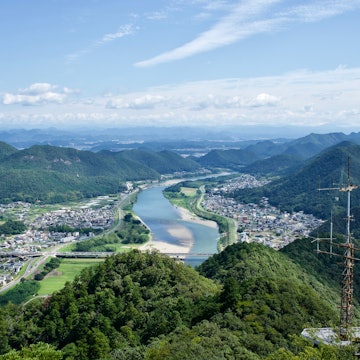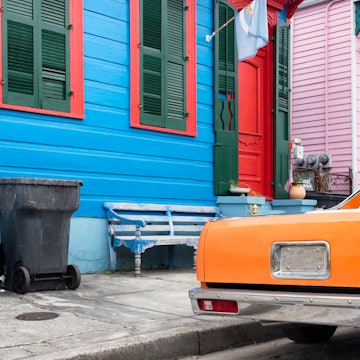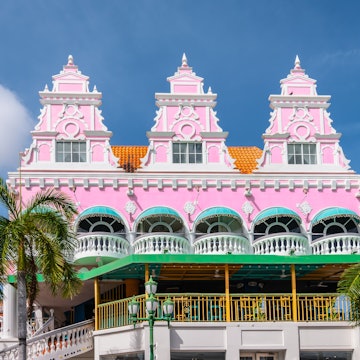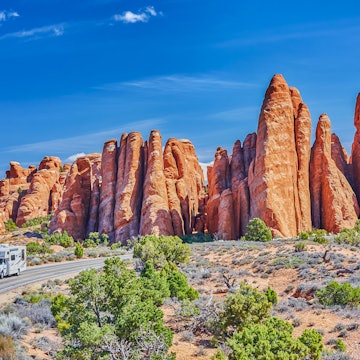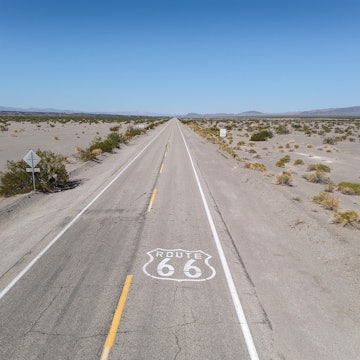

Stop daydreaming of paradise and start planning your trip to Tahiti with this guide. Coupek Martin/Shutterstock
With its gorgeous tropical islands, cerulean lagoons and a vibrant, community-oriented culture, French Polynesia is the kind of travel destination daydreams are made of. It’s located in the South Pacific Ocean, about halfway between Australia and the US, and is made up of 121 islands divided into five archipelagos. Tahiti is the main island and home to the capital city, Papeete.
Despite its reputation as a luxury destination – with spots like Bora Bora’s overwater bungalows famously catering to honeymooners – French Polynesia is now more accessible than ever before, thanks to frequent flights from the US mainland and the arrival of budget airlines such as French Bee.
So whether you prefer high-end luxury on a private island, shopping at Papeete’s fresh food market or hiking to a hidden waterfall, there’s something for everyone. The hardest part? Deciding which islands to visit.
Even though I live here and have been lucky enough to explore the islands, I’m always amazed at how different and unique every island and atoll is. For me though, it’s not the beaches or the landscapes that make this place magic, it's the genuine warmth and generosity of the people that live here.
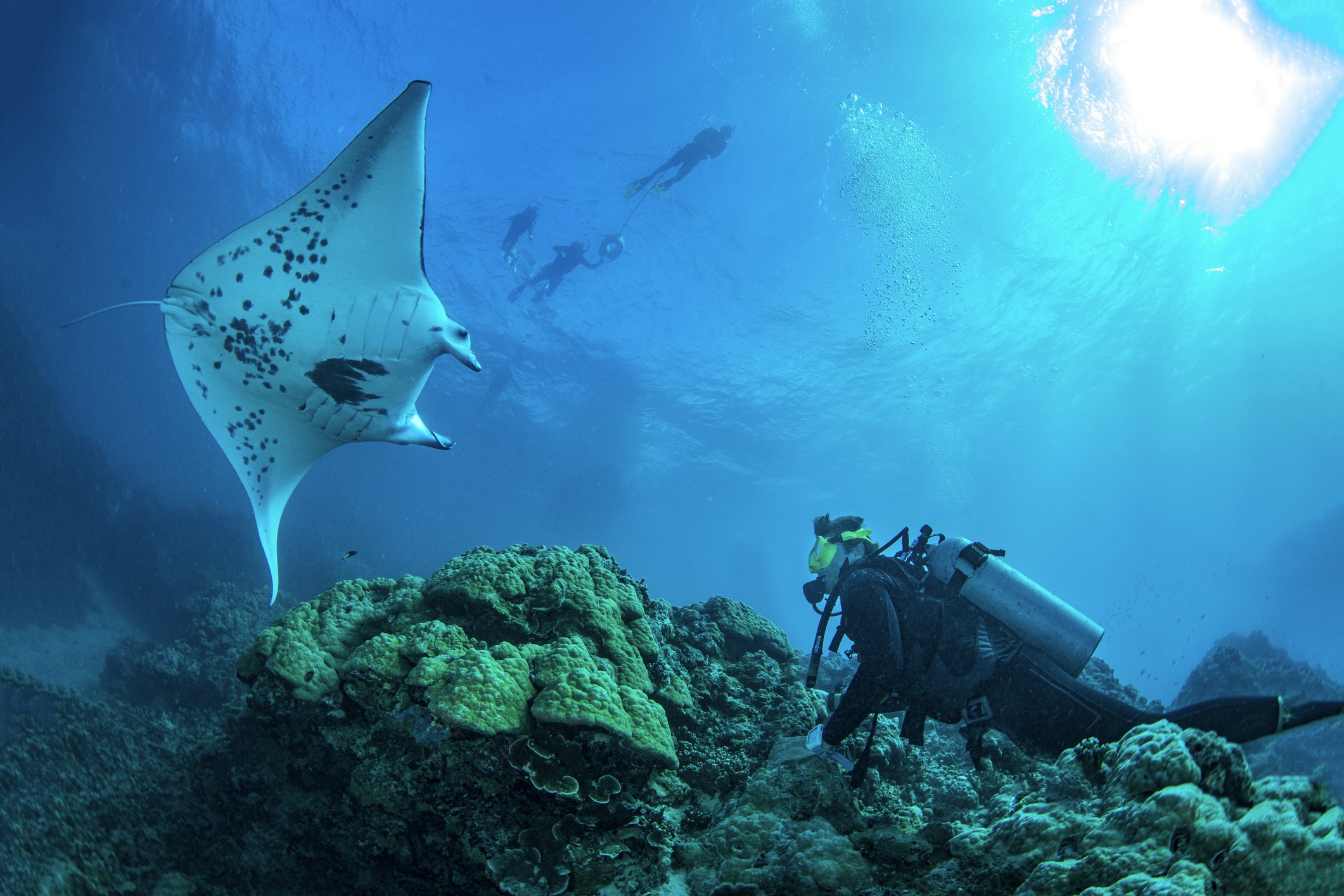
When should I go to French Polynesia?
French Polynesia enjoys a tropical climate, and temperatures hover around 25–30°C (77–86°F) year-round. There are only two seasons: the dry season and the rainy season or “hot and hotter.”
The dry season, from May to October, is when the weather is generally sunny and pleasant. The wet season, which runs from November to April, is when you should expect more heavy downpours, humidity and an increased risk of cyclones. In Tahiti, this season is known as matari’i i ni’a (the “season of abundance”). Welcomed joyously with ceremonies and dance, its start date officially became a public holiday in 2025.
Being an island nation, there is incredible marine life here: the whale watching season runs from July to November, while the Tuamotu archipelago might be the world’s top destination to dive with hammerhead sharks from December to March. Meanwhile, July to November is the best time to swim or dive with manta rays.
June through August are the busiest months for tourism in French Polynesia, and coincide with the islands’ biggest cultural festival, the Heiva, and other major events such as the Tahiti Billabong Pro, a surfing competition. Budget travelers may find cheaper prices traveling during the low season, with September through November also having generally good weather.
How much time should I spend in French Polynesia?
After flying all the way to French Polynesia, you should spend at least five days here at a minimum. It’s enough time to explore one or two islands such as Tahiti and Bora Bora, take in the most scenic spots (such as Teahupoʻo or Matira Beach) and get a taste of the local culture with a traditional dance show, for example. But 10 or more days is ideal, giving you time to explore another archipelago or just do as the locals do and enjoy the slow unhurried pace of life in the islands.
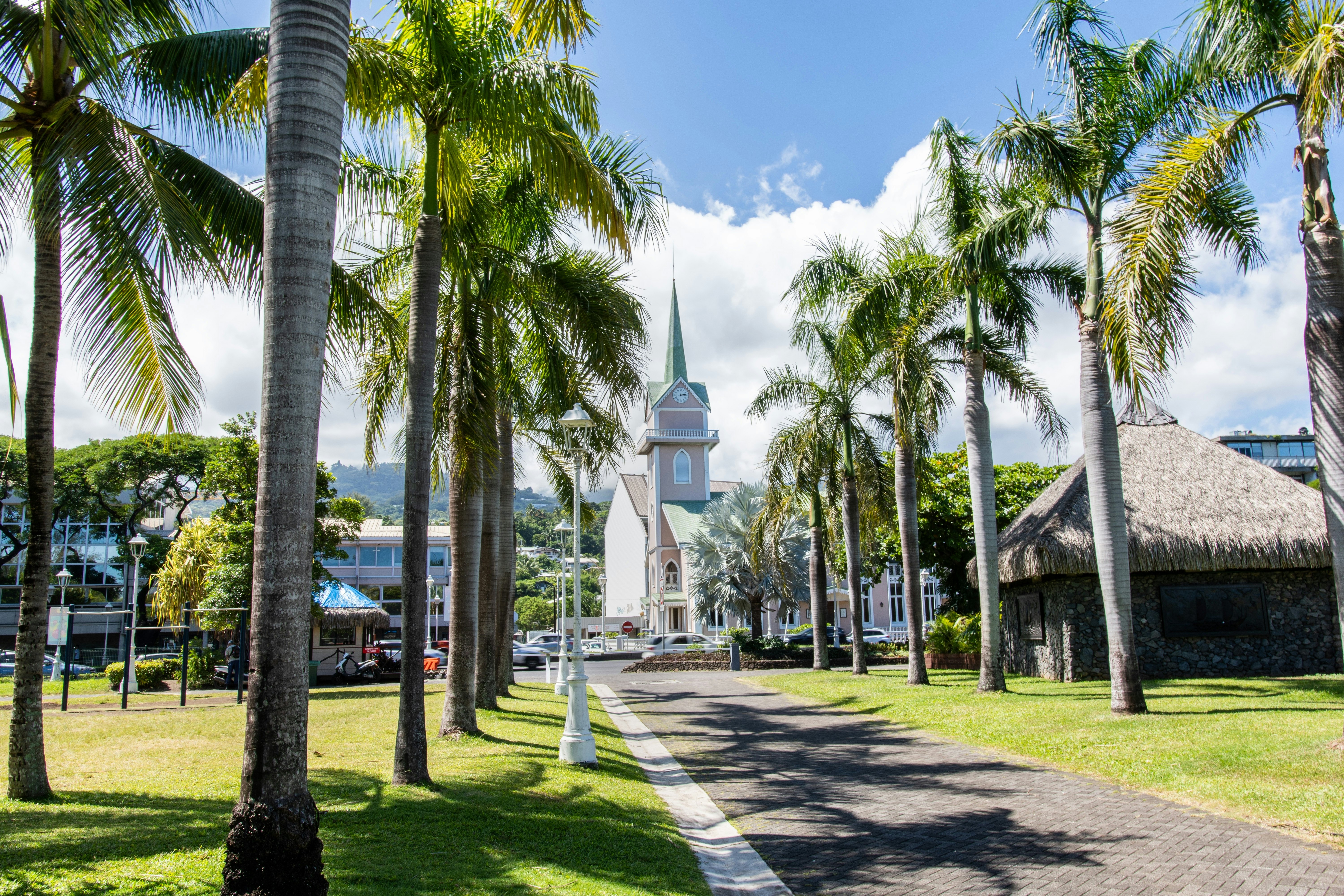
Is it easy to get in and around French Polynesia?
French Polynesia has one international airport, located in Tahiti close to Papeete. Most international flights to Tahiti come through New Zealand or the US (usually LA or San Francisco), although direct flights from Tokyo, Japan are also available on a semi-regular basis.
The quickest and most popular (not to mention the most expensive) way to travel between islands is by air, and there are two domestic airlines that connect Tahiti to over 40 islands. Depending on the island, flights can be limited, so it’s best to book in-advance with Air Tahiti or Air Moana.
Local ferries offer another option for interisland travel, usually at a lower price point. There are frequent services between Tahiti and other Society Islands, the archipelago that includes Bora Bora and Moʻorea. Local ferry companies include Vaeara’i, Aremiti and Apetahi Express, and the ferry terminal is located in Papeete.
For getting around, most islands frequented by tourists (including Tahiti, Moʻorea and Bora Bora) offer car and scooter rental options. On some other islands like Maupiti or Fakarava, it may be easier to get around by bike or on foot. Keep in mind that on the few islands that offer public transport, it will be unreliable and infrequent, although the public bus services in Tahiti are improving. From the international airport in Tahiti, it’s possible to catch a bus to Papeete and other urban centers.

Top things to do in French Polynesia
With over 100 islands to choose from in French Polynesia, and many more activities, it can be difficult to know where to start planning your trip. But here are four of the absolute best things that you shouldn't miss here in the islands.
Stay overnight in an overwater bungalow
Nowhere does opulence quite like French Polynesia, and staying overnight in a private overwater bungalow overlooking the lagoon is an experience unlike any other. If you like to relax in luxury, wake up to a postcard-perfect view and enjoy perks like breakfast hand-delivered by canoe, this is for you. The best overwater bungalows are at high-end resorts such as the Four Seasons, Le Taha’a and St Regis.
Experience the Heiva
Every year in July, French Polynesia celebrates the Heiva festival in an explosion of color, dance and song that lasts around two to three weeks. Events include huge dance performances, singing and chants, and traditional sport competitions. Whether it’s watching competitors husk coconuts at lightning speed, marveling at the dancers’ intricate handmade costumes or listening to heart pounding beats of traditional Tahitian drums, there’s something for everyone. It’s quite simply the best time to experience Polynesian culture at its most joyous.

Spend some time on a remote atoll in the Tuamotus
The Tuamotu archipelago in French Polynesia is made up entirely of atolls: ring-shaped islands of sand and coral that surround beautiful lagoons. They’re a paradise for ocean lovers, offering unrivaled diving, snorkeling, fishing and even surfing. And there’s something magical about visiting some of the most remote islands inhabited by human beings – even the stars are better out here. Some of the most popular atolls to visit include Rangiroa, Fakarava and Tikehau.
Eat like a local at the roulottes (food trucks)
Roulottes are food trucks that pop up most nights along the roadside in Tahiti, and on many other islands in French Polynesia. They offer huge portions of local food favorites, which have a mix of Tahitian, French and Chinese influences. Typical dishes include steak frites (steak and fries), poisson cru (raw fish marinated in coconut milk) and chow mein. To find the best roulottes, head outside of the tourist areas and look for places that are packed with locals: I guarantee you’ll leave with a happy belly.

My favorite thing to do in French Polynesia
I love hiking in French Polynesia. While the islands are usually all about the water, the land is just as incredible. Exploring lush green valleys, swimming underneath waterfalls, enjoying 360-degree views from mountain ridges: hiking here is always an adventure. One of my favorite and most accessible hikes is the Fautaua valley hike, located just 10 minutes outside of Papeete city. It’s doable in half a day with spots to swim along the way, and ends in one of Tahiti’s most stunning waterfalls, with a drop of over 100m. For the best experience and for safety I’d recommend hiring a guide. To access the hike, it’s necessary to obtain a permit and pay a small fee at the Papeete City Hall.
How much money do I need for Tahiti and French Polynesia?
French Polynesia is an expensive destination, and it’s known for luxury tourism. However, there is a wide range of accommodation available to suit most budgets, everything from camping and family-run guesthouses to uber-luxurious resorts on privately owned islands. Note that cash is needed here, particularly outside of Tahiti, although using credit and debit cards to pay is becoming more common.
Hostel room: 3000–5000 CFP
Basic room for two: 5000–8000 CFP
Self-catering apartment (including Airbnb): 10,000–35,000 CFP
Public transport ticket: 200–600 CFP
Local-style baguette sandwich: 300–600 CFP
Dinner for two at a food truck: 4000 CFP
Diving in French Polynesia
French Polynesia is a diver’s dream, with ideal conditions almost year-round and a stunning array of marine life and underwater scenery. June, July and August bring the trade winds, which means the seas can be rough during these months. Note that diving here is expensive; it costs around 10,000 CFP for a single dive, though most operators offer package deals.
For beginners, islands like Tahiti and Moʻorea offer certification programs or the possibility to do a discovery dive to find out what it's like. For experienced divers, head to the Tuamotu archipelago for incredible drift diving and marine life.

Can I travel to Tahiti and French Polynesia on a budget?
Yes, you can. Here are my money-saving tips:
Check budget airline French Bee for cheap flights to Tahiti from Paris and the US.
Plan your trip around just one or two islands; I’d recommend sticking to Tahiti and Moʻorea.
Avoid restaurants and eat out at local food trucks.
Look for accommodations at least two to three months in advance on sites like Airbnb.
If you have your heart set on staying in an overwater bungalow and the money to spend, invest in the experience. Head to one of the islands outside Tahiti for fewer crowds and views without the urban sprawl of the main island. My favorite islands for overwater bungalows are Taha’a, Bora Bora and Rangiroa.
Consider renting a scooter or taking public transport instead of renting a car.
Is French Polynesia safe?
French Polynesia is a safe place to travel and a great place to travel solo or with children. However, it can be dangerous to explore the islands’ valleys, mountains and oceans without a certified guide. Natural occurrences like flash floods and rip currents can be unpredictable – stay safe by heading out with a knowledgeable expert.
What languages are spoken in Tahiti?
Making the effort to learn at least a few words in French and/or Tahitian before you arrive will make a huge difference. Outside of the tourist areas, most people don’t speak English, and a friendly Iaorana or bonjour will go a long way.
Is the water safe to drink?
The short answer is "it depends". Even on the main island of Tahiti, there are places where the tap water is not safe to drink. It’s always best to ask a local or drink bottled water if you’re unsure.






